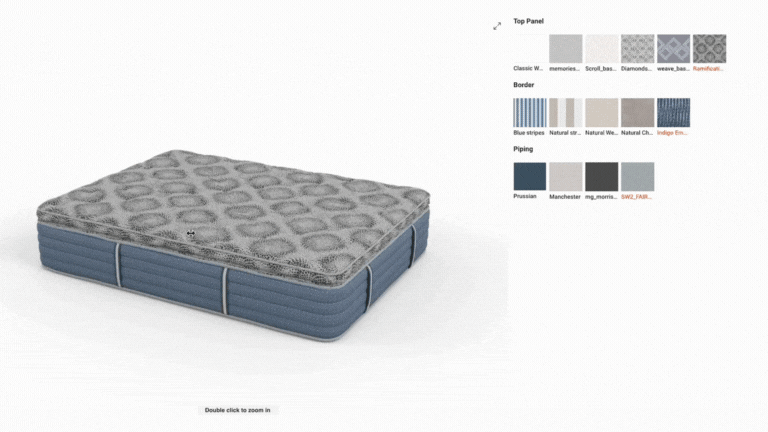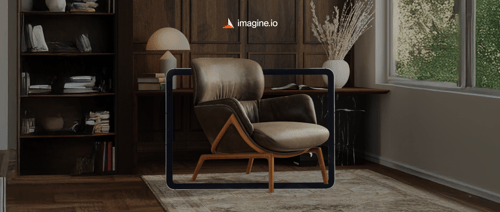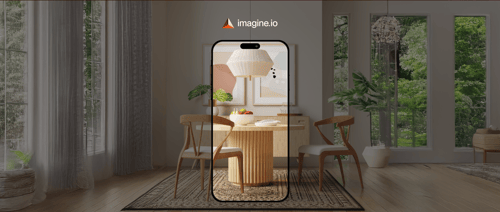The textile industry has come on leaps and bounds in recent years, undergoing a technological revolution which promises to reinvent traditional processes and bring new innovation opportunities.
In this blog post, you’ll see how cutting-edge 3D visualization technology is transforming textile design and manufacturing, and bringing with it exciting possibilities to streamline your operations.
Get the latest updates straight to your inbox.
By clicking sign up you'll receive occasional emails from imagine.io. You always have the choice to unsubscribe within every email you receive.
Traditional Issues in Textile Design & Manufacturing
For years, there've been various issues that textile designers and manufacturers have had to contend with in their line of work.
Ordering Sample Swatches
Something as simple as ordering sample swatches has historically been a lengthy and time-consuming process which often delays production timelines and decision-making.
There’s often a constant back-and-forth of requesting, shipping, and reviewing these sample swatches. As a result, the process comes at great expense, especially when you’re dealing with international suppliers.
Styling & Photography
When working with use case samples, you need to showcase them in the best light which requires professional styling and photography.
Unfortunately, outsourcing these processes can involve complicated logistics as you have to transport the samples around and there can be significant associated costs.
Limited Flexibility in Customization
Creating many customized use case samples can be a time-consuming process and drain your company resources. As such, you’re often limited in your ability to showcase various possibilities to your clients, as it makes sense to offer fewer options from a cost perspective.
Difficulty in Predicting Fabric Performance
Without actual samples, it’s difficult to predict how textiles will perform in different use cases such as upholstery and apparel. You run the risk of both miscommunication and dissatisfaction when you can’t accurately visualize the final product.
Inconsistent Client Expectations
Without visualization tools, it can be challenging to get alignment between designers and clients. When clients receive products that don’t match up with their original vision, this can lead to churn and returns.
The Intersection of Textile Trends and 3D Visualization
Fortunately, it’s easier than you might think to overcome these common challenges you encounter on a daily basis in the textile industry. imagine.io’s 3D visualization technology brings a previously unseen level of transparency to the design, manufacturing, and selling processes.
3D Textile Rendering
With 3D textile rendering, you can virtually bring realistic fabric textures to your textile designs to streamline your manufacturing processes and support the customer experience.

You can bypass the costly textile samples and rely on detailed, lifelike 3D fabric modeling to view the material as if you had it in front of you, inspecting it from different lighting conditions and scenarios.
On the customer’s end, they’ll see exactly what they’re looking at increasing buying confidence and helping them reach an informed decision quickly.
Custom Textile Configurators
Custom textile configurators equip customers with the ability to create their own personalized designs to perfectly match up with their visions.
The customization options can be limitless, and include:
- Colors
- Patterns
- Materials
- Textures
What’s more, you can slot these textile customization tools into your existing processes to streamline textile manufacturing and design.
In doing so, the 3D textile configurators can help reduce your lead times, cut out manual errors, and save money.

Virtual Sampling
Virtual textile sampling makes physical prototypes less important, thereby reducing material waste and keeping that part of the process in-house.
The textile prototyping process allows you to iterate more quickly without stopping to produce physical prototypes, and enables fast decision-making so you can get your product to market much more efficiently.
“Digital prototyping has cut weeks, and sometimes months, from the cycle. It’s made us a much greener company overall because our salespeople can quickly share digital images, and the feedback from our customers has been tremendous.”
–– Holly Fulton, Brand Experience Manager for Culp
AI-Driven Design
AI textile design and manufacturing professionals can also benefit from AI-driven design. Since AI-driven pattern generation can analyze trends, you can use the technology to predict consumer preferences and generate new textile patterns based on these predictions.
imagine.io’s AI tool lets you create new patterns on the fly and visualize which styles best suit them - taking a lot of guesswork out of the process.
Augmented Reality (AR)
Augmented Reality (AR) textile visualization is one of the latest technological innovations disrupting the textile industry.
With it, you can provide an exceptional AR shopping customer experience by enabling real-world textile visualization for visitors to your eCommerce store. That way, they can alleviate any doubts they might have about the suitability of the design in a real-life setting.
Trends and Technologies Disrupting the Textile Industry
Recent technology and trends have effectively disrupted the textile industry, providing both designers and manufacturers with more options in how they create, visualize, and sell their designs from their eCommerce stores.
It’s important to adopt the latest technologies to stay in lockstep with your competitors in the textile industry, and keep your customer experience up to the elevated industry standards.
imagine.io offers 3D visualization and AI tools which can help you overcome these common traditional challenges and innovate new ways to grow your textile design business.
.gif?width=1296&height=1296&name=Untitled%20design%20(8).gif)




.png?width=500&name=How%20to%20Add%20a%203D%20Product%20Configurator%20to%20Your%20WordPress%20Website%20(Complete%20B2B%20Guide).png)
















%20(1).png?width=500&name=Why%20Exploded%20Mattress%20Views%20Matter%20(And%20How%20to%20Generate%20Them)%20(1).png)
.png?width=500&name=Best%20Shopify%20Product%20Configurator_%20How%20to%20Choose%20the%20Right%20One%20(2).png)
.png?width=500&name=Why%20Exploded%20Mattress%20Views%20Matter%20(And%20How%20to%20Generate%20Them).png)



.png?width=500&name=Best%20Shopify%20Product%20Configurator_%20How%20to%20Choose%20the%20Right%20One%20(1).png)







.png?width=500&name=How%203D%20Rendering%20Can%20Make%20or%20Break%20Your%20Industrial%20Design%20Pitch%20(1).png)








%20with%20Digital%20Twins%20and%203D%20Visualization.png?width=500&name=Optimizing%20Your%20Digital%20Asset%20Management%20(DAM)%20with%20Digital%20Twins%20and%203D%20Visualization.png)




.png?width=500&name=Styling%20Home%20Decor%20for%202025_%20From%20Global%20Influences%20to%20Playful%20Personalization%20(1).png)
